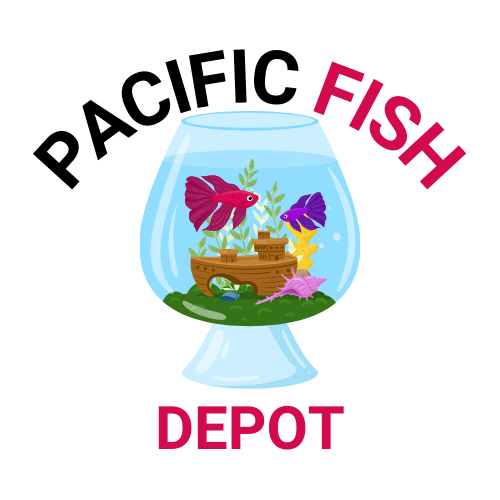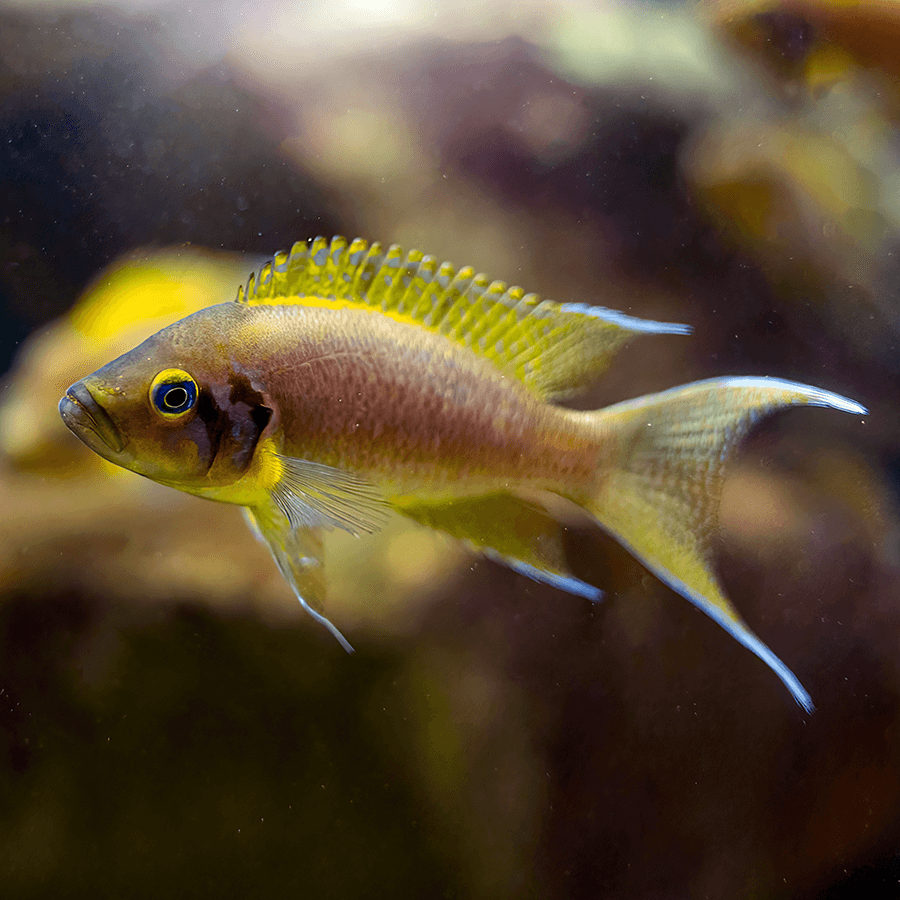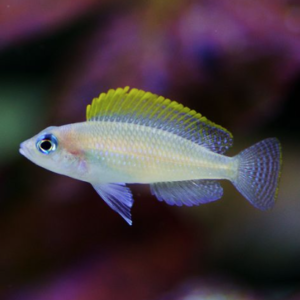No products in the cart.
Fairy Cichlid
$25.00
Fairy Cichlids are cave spawners and breed readily when conditions are right. Pairs lay eggs inside a secure crevice or cave, and fry hatch within a few days. What sets this species apart is the family care system—older siblings stay behind to help raise the younger fry, protect the nest, and defend territory.
Where to Buy Fairy Cichlid
The Fairy Cichlid, known by its scientific name Neolamprologus brichardi, is a beautiful and graceful fish from Lake Tanganyika in East Africa. Its flowing fins, pearly body, and elegant tail filaments make it look almost ethereal—hence its common name. Aside from beauty, this species is also admired for its fascinating social behavior and ease of care, making it an excellent choice for beginners and advanced aquarists alike.
You can purchase healthy, tank-raised Fairy Cichlids from Pacific Fish Depot, where all fish are ethically sourced and professionally handled before shipping.
Appearance and Behavior
Fairy Cichlids have a pale silver-blue body with striking facial markings, including a black stripe under the eye and a signature yellow splash near the gills. Their long, flowing fins often end in elegant filaments that add a touch of sophistication to any freshwater aquarium. Adults reach around 3–4 inches in length.
This species is famous for its colony-based behavior. Unlike most cichlids that are territorial loners, Fairy Cichlids form tight family units where offspring help raise younger siblings. This cooperative breeding style is rare in fish and fascinating to observe.
Aquarium Setup and Requirements
To keep Fairy Cichlids healthy and active, replicate the rocky, crevice-filled environment of their natural Lake Tanganyika habitat. They prefer a clean tank with stable water parameters and lots of caves to choose from.
Recommended tank setup:
Minimum tank size: 30 gallons for a pair, 55+ gallons for colonies
Temperature: 75–80°F (24–27°C)
pH: 8.0–9.0
Hardness: 10–20 dGH
Décor: Rock piles, slate, ceramic caves
Substrate: Sand or crushed coral
They don’t do well with sudden water chemistry changes, so regular maintenance and stable filtration are a must. Keep ammonia and nitrite at zero, and perform regular water changes to maintain high water quality.
Feeding the Fairy Cichlid
Fairy Cichlids are micro-predators in the wild, feeding on small invertebrates and plankton. In captivity, they accept a variety of prepared and frozen foods, but they thrive on a protein-rich diet.
Ideal food options include:
High-quality cichlid pellets
Brine shrimp
Mysis shrimp
Bloodworms (in moderation)
Crushed krill
Spirulina flakes (occasionally)
Feed them once or twice daily, and ensure all food is consumed within a few minutes. Overfeeding can lead to water quality issues and health problems.
Tank Mates and Compatibility
Although they are cooperative within their own group, Fairy Cichlids can be territorial toward outsiders. However, they are still more peaceful than many other African cichlids. If the tank is large and well-structured, they can coexist with:
Shell dwellers
Julidochromis species
Cyprichromis (mid-water swimmers)
Synodontis catfish
Small plecos
Avoid aggressive Mbuna or large predatory fish. It’s best to introduce tank mates when the Fairy Cichlid colony is still young to reduce aggression.
Breeding Behavior
Fairy Cichlids are cave spawners and breed readily when conditions are right. Pairs lay eggs inside a secure crevice or cave, and fry hatch within a few days. What sets this species apart is the family care system—older siblings stay behind to help raise the younger fry, protect the nest, and defend territory.
In the right setup, colonies will expand naturally. Watching the social structure develop is one of the most rewarding parts of owning this species.
For deeper care guidance, visit Seriously Fish’s species profile, a reliable resource for aquarium enthusiasts.
Frequently Asked Questions
1. Can Fairy Cichlids live in a community tank?
Yes, if the tank is large and structured well. They do best with peaceful, Tanganyikan-compatible fish.
2. How many should I keep together?
They can be kept in pairs or groups. Colonies of 5 or more are ideal in tanks over 55 gallons.
3. Are they aggressive?
Mildly territorial, especially when breeding, but generally peaceful compared to other African cichlids.
4. What do they eat?
Protein-rich foods like brine shrimp, cichlid pellets, and mysis shrimp are best. Variety is key.
5. Do they need plants in the tank?
Not necessary. They prefer rock-based environments and may uproot delicate plants.











Reviews
There are no reviews yet.